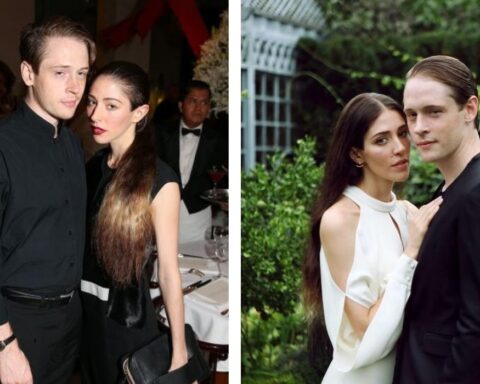In the ever-evolving world of media, one platform has risen to become a household name for entertainment, celebrity updates, and pop culture conversations: The Shade Room. What started as a small Instagram page in 2014 has now become a massive media outlet with millions of followers and an undeniable influence on digital culture. The Shade Room is more than just gossip; it’s a reflection of how modern audiences consume, interact with, and shape media.
This article explores the rise of The Shade Room, its impact on entertainment journalism, and how it has managed to remain relevant in such a competitive space.
The Origins of The Shade Room
The Shade Room was founded by Angelica Nwandu, a Nigerian-American entrepreneur with a vision to create a platform that centered Black culture and voices while still offering the entertainment value of gossip and celebrity updates. With Instagram as its launchpad, The Shade Room quickly grew because it tapped into a unique niche: combining real-time news, humor, and cultural commentary with an unfiltered tone.
At a time when traditional media outlets were slow to adapt to social media, The Shade Room was already thriving on it. The community-driven model allowed followers (often called Roommates) to engage in discussions directly in the comments section, making the brand feel personal and interactive rather than distant and corporate.
Why The Shade Room Stands Out
Unlike mainstream entertainment blogs, The Shade Room has positioned itself as both a news source and a cultural hub. Several elements make it stand out:
- Instant Updates: Followers often get celebrity news on The Shade Room before it appears on larger platforms like TMZ or People.
- Relatability: Posts are written in a conversational tone, often incorporating slang and humor that resonate with its audience.
- Community Engagement: Instead of simply reporting the news, The Shade Room encourages discussion and debate, letting users shape the narrative.
- Focus on Black Excellence and Culture: Beyond celebrity gossip, it highlights achievements, small businesses, and social issues within the Black community.
This balance of entertainment and community building has given The Shade Room staying power in a market where many gossip blogs have come and gone.
The Shade Room’s Influence on Pop Culture
It’s no exaggeration to say that The Shade Room has become a cultural force. The platform not only reports on celebrity news but often sets the tone for public conversations. When something goes viral on The Shade Room, it almost always spills over to Twitter, YouTube, and mainstream media outlets.
Some of the biggest examples include:
- Celebrity Feuds: From Nicki Minaj to Cardi B, disputes gain traction on The Shade Room before they make headlines elsewhere.
- Breaking News: Stories about celebrity breakups, legal troubles, or sudden announcements often surface here first.
- Social Commentary: The platform frequently posts about trending political issues, social justice movements, and cultural debates, offering its audience more than just gossip.
The Shade Room has blurred the line between entertainment journalism and social media virality, proving that a digital-first approach can redefine an entire industry.
The Criticism and Controversy
Of course, no major media outlet is without criticism. The Shade Room has been accused of sensationalism and sometimes contributing to negative narratives, especially concerning celebrities’ personal lives. Some argue that the platform thrives on conflict, amplifying feuds and drama to keep audiences engaged.
However, The Shade Room has also responded to criticism by diversifying its content. In addition to celebrity gossip, the platform now includes positive stories, business features, and motivational posts. This balance helps it remain more than just a “gossip blog.”
For a deeper dive into the latest updates, exclusive stories, and behind-the-scenes content, readers often turn to The Shade Room’s official blog, which expands on what’s shared on social media.
The Shade Room vs. Traditional Media
Traditional entertainment outlets have had to adapt because of platforms like The Shade Room. Where magazines and websites once dominated celebrity reporting, social-first brands now dictate the pace of news.
Some differences include:
- Speed: The Shade Room can post updates within minutes, while traditional outlets often require editorial review.
- Engagement: Followers can comment instantly, creating a two-way conversation.
- Tone: Traditional outlets tend to be more polished, while The Shade Room embraces authenticity and relatability.
This shift highlights the larger transformation in journalism: audiences want immediacy, authenticity, and community, all of which The Shade Room delivers.
Beyond Gossip: Highlighting Achievements
One often-overlooked aspect of The Shade Room is its dedication to celebrating Black excellence. Whether it’s promoting Black-owned businesses, spotlighting entrepreneurs, or highlighting cultural achievements, the platform provides visibility where mainstream outlets often fall short.
For example, their #RoommateBusiness feature gives small businesses exposure to millions of potential customers. Similarly, The Shade Room often shares inspiring stories of resilience and success, reinforcing its role as more than just a gossip site.
Readers can explore these stories in more detail through The Shade Room’s dedicated blog, which offers longer-form content that doesn’t always fit into an Instagram post.
The Shade Room in the Digital Ecosystem
The Shade Room has also influenced how other platforms operate. Competitors now mimic its fast-paced posting style, its conversational tone, and even its branding strategies. But The Shade Room maintains an edge because of its loyal audience.
Its success also demonstrates the power of design and storytelling in digital media. Just as architectural design influences how we experience physical spaces, media design shapes how we consume content. For a fascinating perspective on design and structure in a different industry, the innovative concepts at Fly Architecture show how creativity and user-centered design can transform experiences. Both architecture and digital media rely on building spaces — whether physical or virtual — where people can connect, engage, and feel part of something bigger.
What’s Next for The Shade Room?
As media consumption continues to evolve, The Shade Room faces the challenge of staying fresh while maintaining authenticity. Some potential future directions include:
- Expanding Video Content: With the rise of TikTok and YouTube Shorts, The Shade Room could deepen its video strategy.
- Collaborations and Podcasts: Partnerships with celebrities, influencers, and creators could bring new audiences.
- More Positive Spotlights: Balancing gossip with uplifting stories will likely remain part of its growth strategy.
Regardless of its path, The Shade Room has cemented itself as one of the most influential digital platforms in the entertainment industry.
Final Thoughts
The Shade Room is more than just a gossip page. It’s a cultural powerhouse that reflects how media has shifted in the digital era. From its grassroots origins to its status as a leading voice in pop culture, the platform continues to shape the way audiences interact with celebrity news.
It’s fast, engaging, community-driven, and unapologetically authentic. For anyone interested in entertainment, culture, and the future of digital media, The Shade Room is impossible to ignore.
Read More Zoeperry









